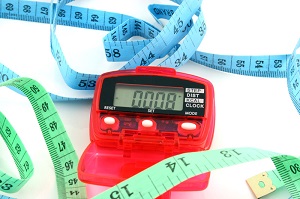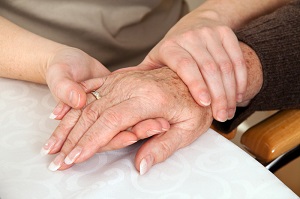 When your children reach the age to embark out into the world on their own, you can be left with a feeling of loss and loneliness. Some parents may experience what is referred to as Empty Nest Syndrome, feelings of depression, sadness, and/or grief. It becomes a whole different home when the children are not there on a regular basis. It may take some time to accept the change and enjoy the new opportunities.
When your children reach the age to embark out into the world on their own, you can be left with a feeling of loss and loneliness. Some parents may experience what is referred to as Empty Nest Syndrome, feelings of depression, sadness, and/or grief. It becomes a whole different home when the children are not there on a regular basis. It may take some time to accept the change and enjoy the new opportunities.
You’ve done your job raising your children, they are ready to fly from the nest. It’s important for them to be happy and healthy adults, so you need to encourage them in as guilt-free a way as possible. Be positive and encouraging to your child who is moving out on their own.
It’s never too early to think about your empty nest in order to make the transition easier on you and your child. Here are six tips to help you move forward with this new part of your life.
- Plan Ahead – It’s never too early to start planning and talking to your child about the future.
- Get to Know Your Spouse – Now is the time to rekindle your relationship with your spouse. Use the time travel and get to know one another again.
- Make a Dream List – Start a list of the things you have always wanted to do or see but couldn’t while raising a family. Maybe take lessons of some sort, or change your career, or even going back to school for extra course just for you. Start with something small and work towards a new goal.
- Avoid Big Changes – Try not to make any huge changes like selling the house. Give yourself some time to adjust to these new changes first.
- Talk to Others – Look to others who have been through the same situation or are also saying goodbye to their kids. You’ll find that the similarities will help you get through the loneliness and feeling of loss. It will also help keep you busy and not thinking of all the negatives.
- Prepare Your Child – By getting your child ready to be on their own, you will be helping them while also making you feel more at ease with them being away. Teach them how to do the laundry, prepare meals, deal with money issues, etc.
It is hard to let your child go – give them their independence. You have done your job and you can be proud of them and you’ll be able to notice just how fine a job of parenting you have done. When kids leave, parents are challenged to restructure their lives and find new identities. An empty nest also comes with its own joys. It’s a time where parents can be open to personal growth and discovery. It will take time, but you’ll soon be busy and enjoying what your new found time and freedom has brought. And you’ll love and cherish the time spent when your kids come back home for visits.
For more articles go to http://clubonefitness.lifestyleezine.com

 Moving day can be a time-consuming and stressful experience. There are ways to keep the stress levels down and for you to not feel so overwhelmed. There are many steps and items of the move that have to be taken care of. Arranging the steps and organizing them accordingly can make the process quite manageable. A well organized move will make for an easier one.
Moving day can be a time-consuming and stressful experience. There are ways to keep the stress levels down and for you to not feel so overwhelmed. There are many steps and items of the move that have to be taken care of. Arranging the steps and organizing them accordingly can make the process quite manageable. A well organized move will make for an easier one. The ankle is a physically active part of the body. The ankle consists of several ligaments that connect the bones and are required for proper function. There are also many muscles that also help support the ankle during activity. Building strength and proprioception, or special awareness, in these muscles helps to prevent injury and improve performance. Often, the most neglected body part in exercise is the ankle. There is no single sport that doesn’t involve the ankle in some way. It is important that we don’t forget about this joint and make sure we do what we can to make it strong and sturdy. A major benefit with strong ankles is that you can help reduce the risk of injury.
The ankle is a physically active part of the body. The ankle consists of several ligaments that connect the bones and are required for proper function. There are also many muscles that also help support the ankle during activity. Building strength and proprioception, or special awareness, in these muscles helps to prevent injury and improve performance. Often, the most neglected body part in exercise is the ankle. There is no single sport that doesn’t involve the ankle in some way. It is important that we don’t forget about this joint and make sure we do what we can to make it strong and sturdy. A major benefit with strong ankles is that you can help reduce the risk of injury. Eating well is key to a healthy lifestyle. Adding greens to your diet can help you pack some powerhouse nutrients into your meals. Leafy greens like kale, collard greens, chard, bok choy, arugula, and spinach just to name a few, are great greens to introduce to your daily diet. Green vegetables are loaded with protein and contain a ton of micronutrients, including folate, carotenoids, such as lutein and zeazanthin (promoting healthy vision), calcium, and omega-3 fatty acids. These leafy greens have the potential of warding off many types of cancers and are very good for your heart health.
Eating well is key to a healthy lifestyle. Adding greens to your diet can help you pack some powerhouse nutrients into your meals. Leafy greens like kale, collard greens, chard, bok choy, arugula, and spinach just to name a few, are great greens to introduce to your daily diet. Green vegetables are loaded with protein and contain a ton of micronutrients, including folate, carotenoids, such as lutein and zeazanthin (promoting healthy vision), calcium, and omega-3 fatty acids. These leafy greens have the potential of warding off many types of cancers and are very good for your heart health. Eating nutritious food is one of the best ways to improve your overall health. It is important to get the right nutrients to keep your body working properly. We all know a healthy diet consists of the right amount of vegetables, whole grains, fruits, lean proteins and healthy fats. There are simple switches you can make to make your meal a little more healthy.
Eating nutritious food is one of the best ways to improve your overall health. It is important to get the right nutrients to keep your body working properly. We all know a healthy diet consists of the right amount of vegetables, whole grains, fruits, lean proteins and healthy fats. There are simple switches you can make to make your meal a little more healthy. Sometimes we get into a slump and just need someone, or even something to get us going to get our exercise in. Getting into shape, losing weight, and moving more each day are all really tough to do. An activity tracker can help. Technology these days can be just that thing. Many people are now sporting a new fit tool, usually a Fitbit or pedometer tool that is strapped onto the wrist. There are also many fitness applications that you can download onto your smartphone. It can be a great way to keep you accountable to what you are doing during the day. It may just be that push you need. At the very least, it will make you more mindful of your present activity level, which is a good step to getting fit.
Sometimes we get into a slump and just need someone, or even something to get us going to get our exercise in. Getting into shape, losing weight, and moving more each day are all really tough to do. An activity tracker can help. Technology these days can be just that thing. Many people are now sporting a new fit tool, usually a Fitbit or pedometer tool that is strapped onto the wrist. There are also many fitness applications that you can download onto your smartphone. It can be a great way to keep you accountable to what you are doing during the day. It may just be that push you need. At the very least, it will make you more mindful of your present activity level, which is a good step to getting fit.  As we enter the hot or cold temperatures throughout the year, there must be some ways we can keep comfortable without freezing or sweating. What we do and what we wear can help us regulate our temperature so we stay comfortable during those extreme temperature days.
As we enter the hot or cold temperatures throughout the year, there must be some ways we can keep comfortable without freezing or sweating. What we do and what we wear can help us regulate our temperature so we stay comfortable during those extreme temperature days. Vitamin D is the silent hero in our lives. Vitamin D is essential for bone health and it has also been suggested that it may also benefit in protecting us against colds and fighting depression.It can be found in fatty fish such as herring, mackerel, sardines and tuna. However, the body receives most (80%-90%) of its vitamin D from exposure to sunlight which is absorbed through your skin.
Vitamin D is the silent hero in our lives. Vitamin D is essential for bone health and it has also been suggested that it may also benefit in protecting us against colds and fighting depression.It can be found in fatty fish such as herring, mackerel, sardines and tuna. However, the body receives most (80%-90%) of its vitamin D from exposure to sunlight which is absorbed through your skin.  We spend so much time and effort decorating for the Holidays, and then once it’s over and everything is put away, the house always looks so bare – especially if you have had more than one Christmas tree up. There are several ways to keep your home looking beautiful, and well decorated, even after the holidays.
We spend so much time and effort decorating for the Holidays, and then once it’s over and everything is put away, the house always looks so bare – especially if you have had more than one Christmas tree up. There are several ways to keep your home looking beautiful, and well decorated, even after the holidays.  Losing someone or something you love is heart wrenching. There are many emotions and stages of grief you will go through. There is no set way to deal with the pain, and everyone deals with loss and grief in their own way. While there is no right or wrong way to grieve, there are healthy ways to cope with the pain that, in time, can help you move on.
Losing someone or something you love is heart wrenching. There are many emotions and stages of grief you will go through. There is no set way to deal with the pain, and everyone deals with loss and grief in their own way. While there is no right or wrong way to grieve, there are healthy ways to cope with the pain that, in time, can help you move on.